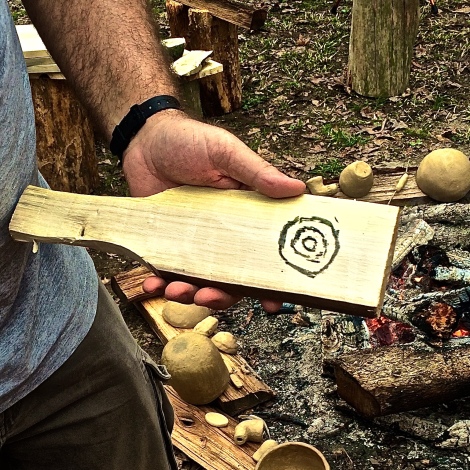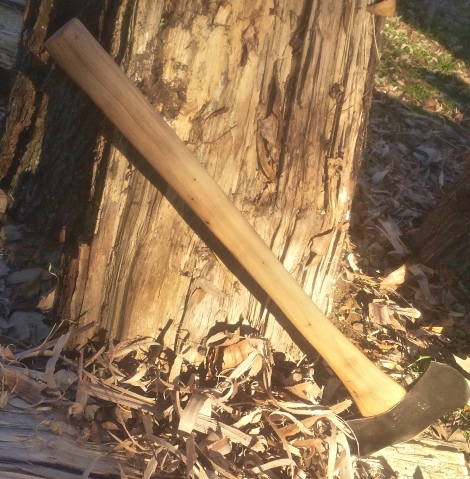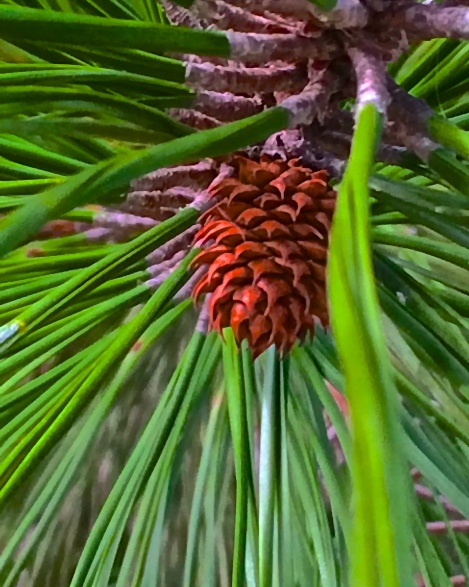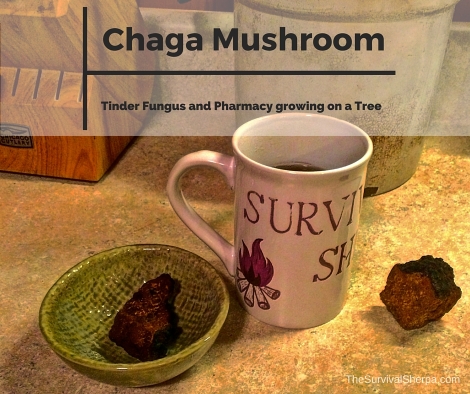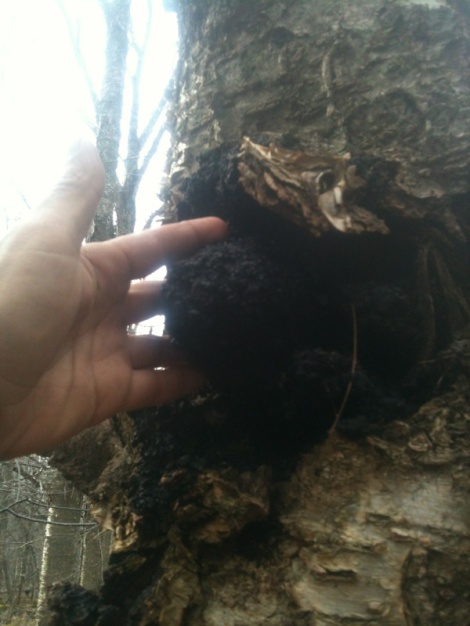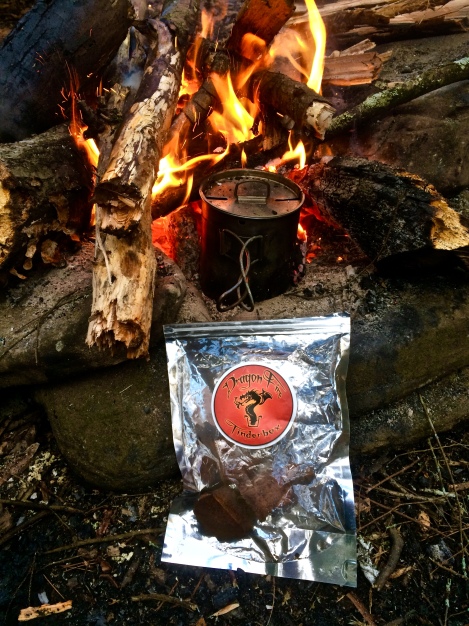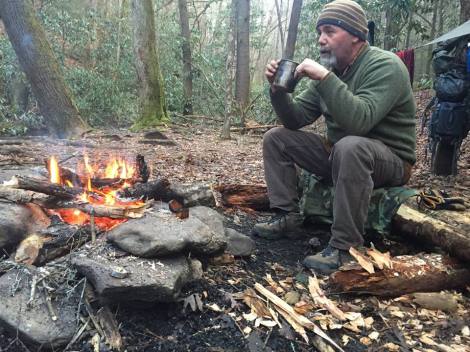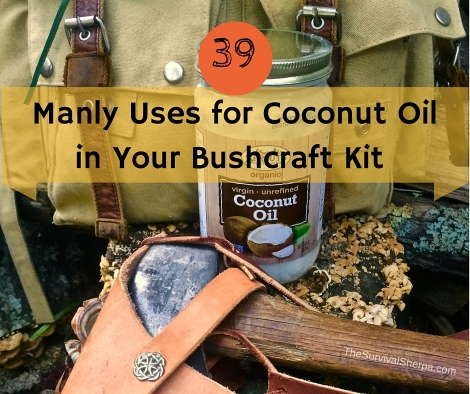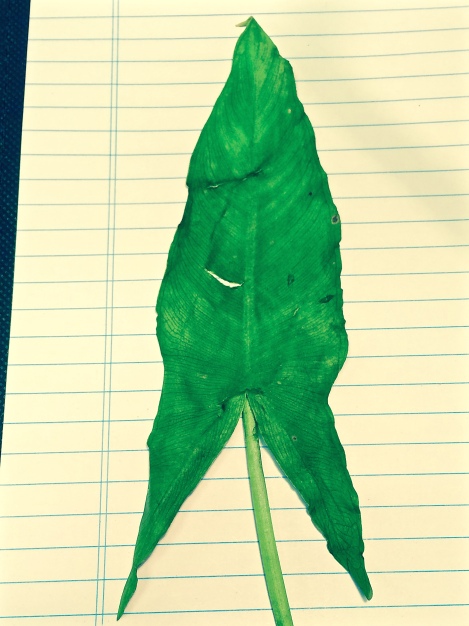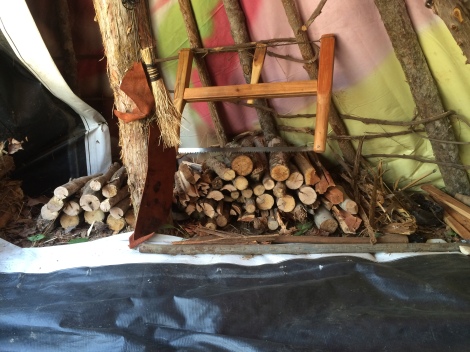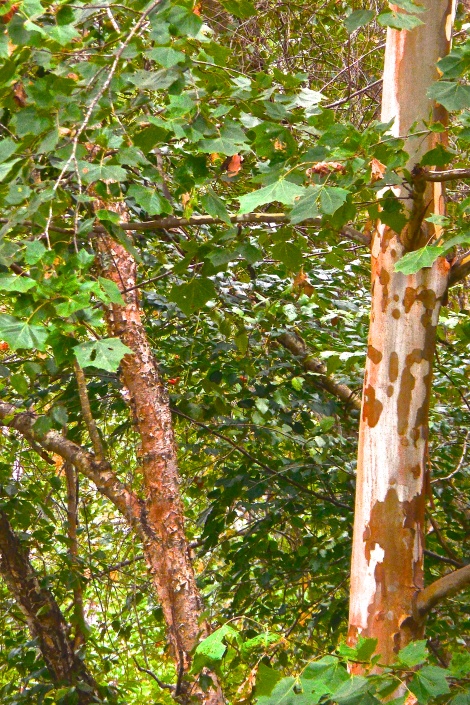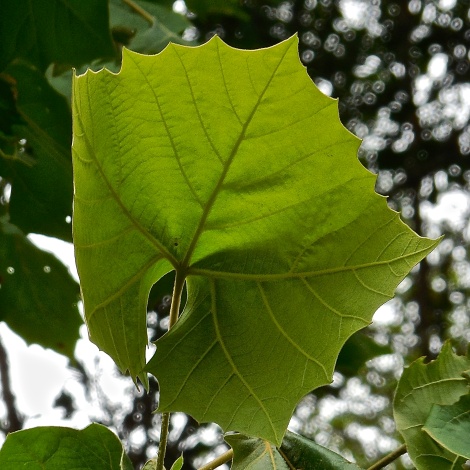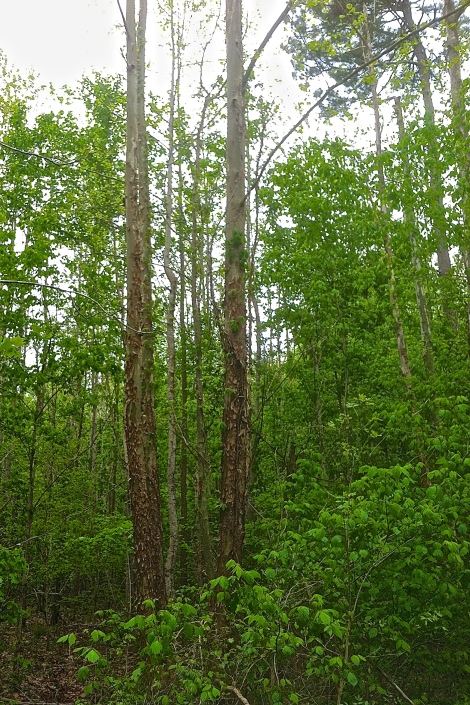by Todd Walker
I recently took three of my students on a scout through a patch of woods surrounding our school to select a route to simulate the Trail of Tears they were studying. This was nothing close to the tragic event of the Cherokee people being rounded up and forcibly removed from tribal homelands. For our students, a short walk in the woods was better than sitting in a cramped desk reading about this dark time in our country’s history.
Students hit the trail with their belongings; books, book bags, and whatever they wore to school. Many were ill prepared for the mid-30 degree weather. Our first stop was a persimmon tree with fruit in different stages of ripeness. The bravest students shared in the bounty with me.
There is no way to carry enough provisions to sustain you on a grueling 800 mile journey. Foraging was essential. The inner layer of bark from a pine tree was also sampled. A few of the students chewed the uncooked phloem (inner bark) like chewing gum. When cooked over a fire, this layer of bark provides food filled with nutrients and vitamins. Adding a cup of pine needle tea from said tree will boost vitamin intake.
A quick demonstration of the essential tool of humanity, fire, came at the end of our simulation. Flint and pyrites were the precursor to modern flint and steel which the Cherokee obtained through trade. Further in the past, friction methods would have provided fire.
There were no convenience stores or outfitter shops along the way to Indian Territory. The logistics of moving groups of a thousand or more souls (new born to elders) through a rugged landscape in modern times would be a nightmare. We can only imagine the horrible conditions encountered in 1838. While some were fortunate to have a horse or wagon for conveyance, the majority carried their burdens on foot.
We can only imagine the hardships faced during their forced removal. Our brief exercise was instructive. Many questions came throughout the walk. Collecting resources for food, clothing, and shelter to sustain one family, much less groups of 1,000, would take extensive knowledge and experience which Native Americans had used for thousands of years.
Only a Fool Comes Home Empty Handed!
In Postcards from the Past, Scott Jones, my friend and prehistory mentor, offers the perfect quote describing me in this Eskimo saying, “… only a fool comes home empty handed!”
Rock On
In the view of a tenderfoot, the basketball-sized rock we spotted on our initial scout trip was nothing special. It was just a heavy rock. All three of the young men looked at me like I was crazy as I hoisted it to my shoulder and continued walking. Midway back I passed my burden to one of them. One doesn’t simply walk past a piece of chert that size. One either carries it home or remembers the location for later retrieval.
Below is a 34 second video I shot using the rock to start a fire…
Chert, a sedimentary rock, was a favorite stone for prehistory tool makers. Today its curvy conchoidal fracture and hardness allows modern flint-knappers to shape primitive projectile points and cutting tools. Chert can be found in earthy colors ranging from white to black with a waxy, smooth luster when fractured. Quartz and quartzite are rocks I carry home often.
Sticks and Bones
My favorite wood types are those who swallowed fire, as Mark Warren says. Fast-growing soft woods such as cedar, tulip poplar, basswood, sassafras, white pine, willow, and mimosa to name a few, are more porous. When rubbed together skillfully, they readily give up the fire they swallowed.
More info on some of my favorite trees can be found here.
My tree collection, much to Dirt Road Girl’s chagrin, takes up a sizable portion of our backyard. Lots of Eastern Red Cedar continues to be added for benches and furniture… which makes DRG smile.
Wooden utensils such as spoons, bowls, cutting boards, and kuksas are waiting inside my woodpile. Wood plays a vital role for camp comforts… and not just as firewood. The following wood projects made from trees and other woody plants may help channel your inner woodsman…
- Semi-permanent shelters
- Cooking/smoking tripods
- Fish trap
- Pot hooks
- Pack frames
- Carving benches
- Paring ladder
- Tool handles
- Camp mauls
- Crawfish trap
- Frog/fish gigs
- Atlatl and darts
- Hunting arrows
Bones are a useful resource I run across from time to time in my woods tramping. A five gallon bucket in my shop contains remains of different woodland critters. Antlers make wonderful tools and functional accents for my leather work. I’m certainly not opposed to pulling to the curb to collect road kill. Some of my most prized roadside finds include beaver, bobcat, and deer.
Wild Pantry
As noted above, collecting wild food on hikes is a fun way to supplement your food cache. Just remember that every plant is edible… ONCE. This statement isn’t about foraging fear-mongering, of course there are poisonous plants in the wilderness. But with proper guidance from an experienced foragers, anyone can enjoy wildcrafting.
Check out this page on our blog for further reading.
Feral Pharmacy
I’m not a herbalist but have found this pursuit a healing hobby. For professional training in the southeastern U.S., I recommend Daryl Patton, The Southern Herbalist and Mark Warren of Medicine Bow.
Weeds, plants, clay, and trees were all used before modern medicine for the purpose of healing and preventive health maintenance. Documentation shows that the 19th century Cherokee people used about one-third of the 2,400 species of plants available to them in southern Appalachia for food and medicine.
Below are a few links to articles we’ve written which may help you broaden your view on useful plants for your medicine cabinet:
- How Cherokees Used Trees of Southern Appalachia for Food, Medicine, and Craft
- How to Harvest, Prepare, and Use Yellow Dock Root Medicinally
- 27 Survival Uses for Common Mullein Besides Cowboy Toilet Paper
- How to Make Lucky Sherpa Plantain Salve
- Herbal Medicine Kit series
Trail of Tears Remembered
Our short simulation was simply an attempt to open student’s eyes to life and death on the Trail of Tears. An estimated 15,000 to 16,000 Cherokee started this journey. Even with their extensive foraging knowledge, over 3,000 lives were lost to disease, exposure, and starvation along the way.
It is my hope that our simulation gave our students a small glimpse of this historic tragedy. May we all remember.
Keep Doing the Stuff of Self-Reliance,
Todd
P.S. – You can also keep up with the Stuff we’re Doing on Twitter, Pinterest, Google +, YouTube, Instagram, and Facebook… and over at our Doing the Stuff Network.
P.P.S – If you find value in our blog, Dirt Road Girl and I would appreciate your vote on Top Prepper Sites! You can vote daily by clicking here or on the image below. Check out all the other value-adding sites while you’re there…
Thanks for Sharing the Stuff!
Copyright © by Survival Sherpa: In light of the recent theft of all my content by a pirate site, my sharing policy has changed. I do not permit the re-posting of entire articles from my site without express written consent by me. My content on this site may be shared in digital form (200 words or less) for non-commercial use with a link back (without no-follow attribute) to the original article crediting the author. All photos, drawings, and articles are copyrighted by and the property of Survival Sherpa. You are more than welcome to share our photos and articles on social media for educational purposes as long as you link back to the original article/photo with credit to the author.


















